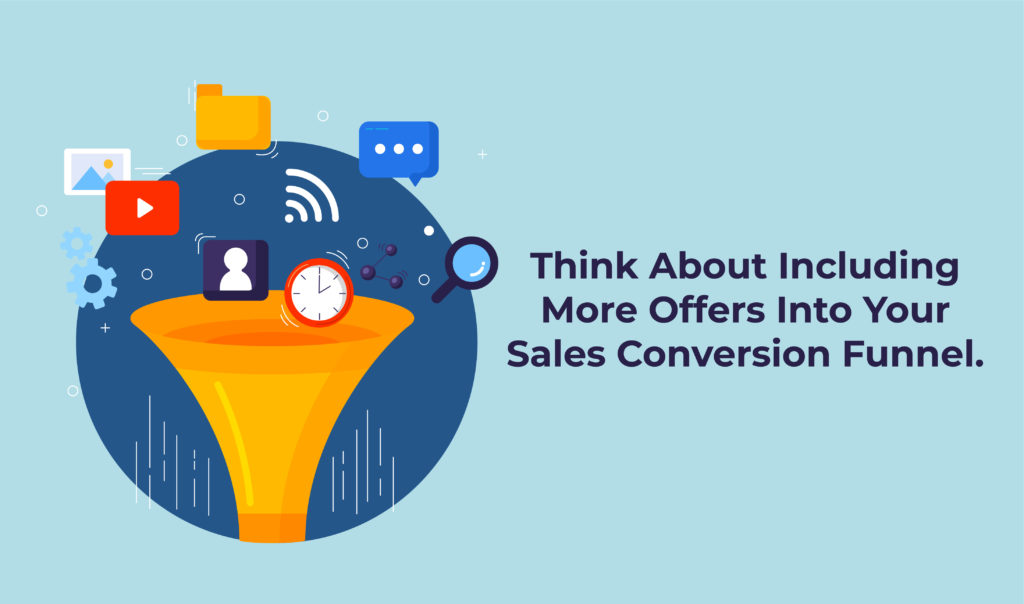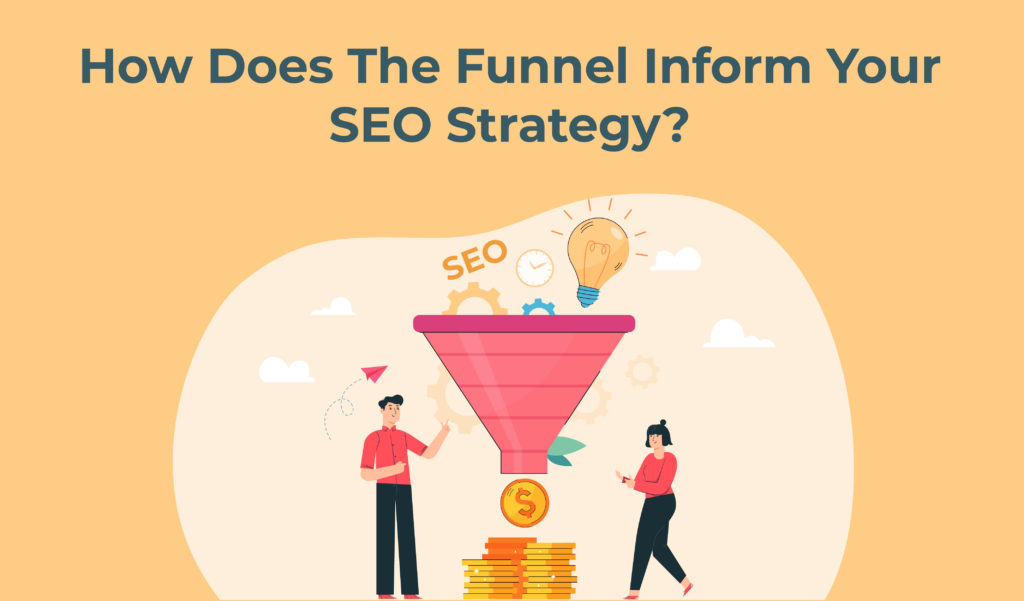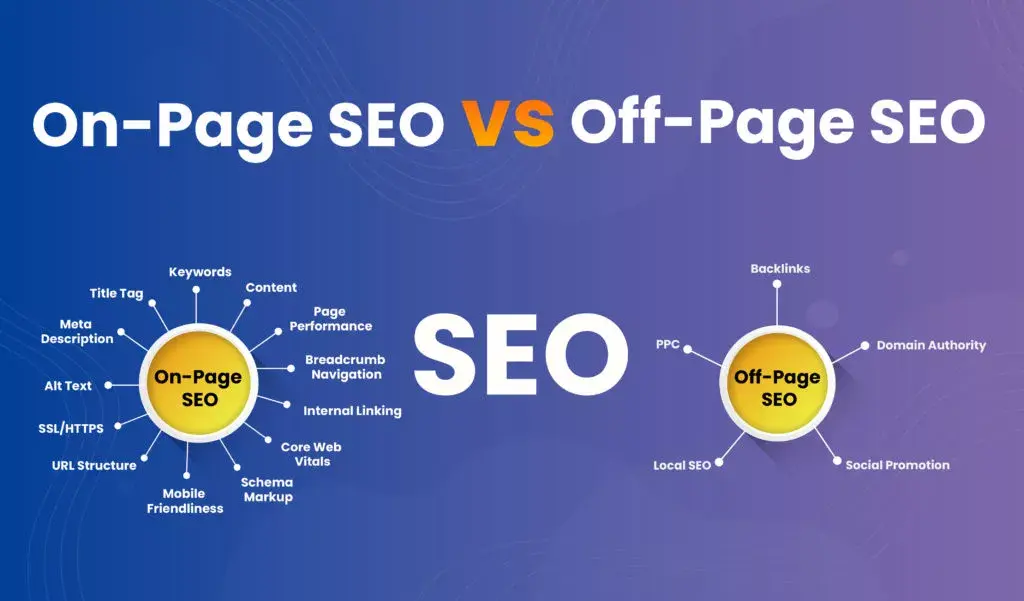How do SEO and Conversion funnel work together?
Table of contents

It’s a prevalent misconception that the goal of search engine optimization (SEO) for marketing is to increase online presence. Although that is true, it only provides a portion of the story. An essential component of your marketing plan is SEO. The term “piece” is the key. It’s not intended to exist in isolation. While SEO can undoubtedly increase website traffic, pageviews do not directly contribute to a company’s bottom line. It would help if you integrated your SEO strategy with the marketing funnel phases to create a fruitful campaign that genuinely brings in money. What you should know is as follows. An efficient conversion funnel can fill the gap between making a healthy profit and barely breaking even say the experts from Jacksonville SEO Company. It increases the revenue you receive from your marketing initiatives. Whether you intentionally created a conversion funnel or not, if you have a website, one already exists. You have a conversion funnel if you aim to persuade your visitor to take any action. This is accurate even if your primary objective is to get site visitors to subscribe to an email list. A conversion funnel of some kind may be seen on nearly every website.
In this article, we’ll look at:
- What is a conversion funnel?
- Why should you use a sales funnel?
- How to Create a Sales Conversion Funnel?
- How does the Funnel inform your SEO strategy?
What is a conversion funnel?

Using a conversion funnel, you can see prospects’ steps before converting. Because of the inverted design, which symbolizes how options dwindle as they approach conversion, it is named a funnel. In the Funnel, there are three levels.
- At the top of the Funnel
You attempt to draw in potential clients at the “awareness” stage at the top of the Funnel (TOFU). The customer is now exploring the internet for a remedy after realizing they have an issue. They might make a purchase, but they’re not exactly sure what or when they want to buy. You must offer material tailored to the kinds of search queries made at this early stage if you’re going to attract these potential clients.
For your content to appear in the SERPs and attract searchers to your website, it is essential to provide answers to these questions. This entails putting commercial aim aside and concentrating on keyword phrases based on queries. You can accomplish this with the use of a variety of tools.
- The Center of the Funnel
Customers entering the middle of the Funnel (MOFU) after the awareness stage consider making a purchase. They haven’t decided on exactly what they’ll purchase or from whom. At this point, customers are pretty precious. They are eager to buy something you have to offer. You have to figure out how to get in front of them.
While the keywords you target and how you provide the material may change, adding content to your website is still a successful strategy. The center of the Funnel is where customers are doing their choice exploration. They want to get a new pair of pants, but before doing so, they want to research the various styles and compare pricing and value. This could entail creating a blog post that targets pertinent keywords or improving current landing pages to catch more different phrases.
- The bottom of the Funnel
Visitors at the base of the Funnel (BOFU) are most likely to buy from you; all they need is a little convincing to convince them. Keyword tools start to lose some of their significance at this point. At the bottom of the Funnel, the possibility is aware of your existence and may have already been to your website several times. It’s your responsibility to make the last pitch that convinces them to make a purchase. Your on-site search turns into a data mine at this stage.
Why should you use a sales funnel?
The creation of the sales funnel takes a lot of time and effort. However, it’s a kind of investment that swiftly pays off, and you’ll get good results sooner than you might think states the SEO Jacksonville experts. You’ll be able to adjust the actions to meet customers’ needs at different points in the sales funnel. Knowing that it’s essential to set expectations of potential customers up front, inspire them, and demonstrate how you differ from your competitors in the market will enable you to make the appropriate arguments at the right moment.
You’ll be able to eliminate the so-called bottlenecks by keeping track of how well each step of the sales funnel is working. A small number of conversions may be because negative connections with your brand initially dissuade potential clients.
How to Create a Sales Conversion Funnel?
However, creating a successful conversion funnel takes time. It takes time to develop. But it’s time to start working on your Funnel if you want to increase your sales and earnings. Some methods of Sales Conversion Funnel by Jacksonville SEO experts are listed below will assist you in converting more site visits into leads and leads into clients.
- Establish your conversion objectives in Google Analytics
After deciding on the design of your Funnel, you must have a mechanism to monitor how visitors navigate your website. Conversion target creation in Google Analytics is the most effective method.
One of the most acceptable ways to assess the effectiveness of your website is through analytics. The more details you can deliver about your goals, the more useful this tool will provide you with an indication of your success. This is a magnificent place to start if you’ve already got a few goals set up in Analytics.
But you must establish goals at each funnel point to understand how it operates. You can choose how many to include, but you should provide each step with at least one goal. Additionally, you want to create plans for any significant conversions, such as purchases, form completions, subscriptions to email lists, and resource downloads. However, creating conversion targets is a simple procedure. Go to your Admin settings after signing into Google Analytics. After choosing the desired View, select “Goals.” In the upper left corner, select “New Goal.”
You have a few alternatives for establishing your goals from here. You can choose from the templated options at the top of the page. Common objectives like online registration, account creation, inquiries, and social participation are included in these templates. Setting up those goals is made simple by the templates if any of these correspond to the conversions you wish to track. You’ll need to create unique plans for modifications that don’t fall under these categories.
If you haven’t yet set a Google Analytics account here is a step-by-step guide to set your Google Analytics account on your website.
- Draw up your ideal purchasing procedure
There are several examples of conversion funnels in visual form besides the one shown above. It can be considerably more complex depending on the procedures and processes you wish to examine. In your Funnel, you might also have several objectives. You may better understand how users interact with your website by watching your Funnel. Utilizing this knowledge, you can increase the number of prospects reaching the Funnel’s “buy” level. Consider the path visitors take from their initial engagement with your website to becoming a customer when you begin to build your conversion funnel.
- Find the leaks in the conversion process on your website
Rewind for a moment to our previous illustration of a sales funnel. This procedure isn’t a funnel, in a sense. While it should direct visitors toward conversion, an actual funnel is more successful at handling all of your visitors to the required action. Consider the Funnel that your website’s potential clients pass through. Not interested users will be filtered out at each funnel level, and only those who meet the requirements advance to the next level. The remainder exits your Funnel on the side. These exits are what some marketers call “leaks” in your conversion funnel. It’s possible that some of these people left your Funnel because they weren’t qualified leads, but it’s unlikely that this was the case with all of them.
Your website may occasionally fail to advance users effectively to the following step. There are many tools convenient to assist you in locating your “leaks” and taking action to reduce them. The Funnel Visualization report is the best tool for finding funnel-related problems if you’ve included funnels in your Analytics goals. From the Analytics menu, choose “Conversions,” then “Funnel Visualization.” Maybe your Funnel isn’t leaking. It can simply be the incorrect Funnel.
Your Reverse Goal Path report will show you if this is the case or not. It demonstrates how they arrived at the conversion rather than explaining how efficiently users navigate through your conceptualized conversion funnel. Studying this report can give you more insight into your visitors’ behavior. And if their behavior doesn’t match your conversion funnel, it might assist you in identifying where improvements need to be made.
- Think about including more offers in your sales conversion funnel

A sales funnel has gaps at every level, as I indicated before. Unqualified leads may be filtered out in some circumstances, but this is inevitable. However, although some of these visitors may not be qualified purchasers, and some may be convinced by a more persuasive website or call to action, others may be more intrigued by a new offer.
They might be the ideal client for one of your other items or services, even if they don’t qualify for your introductory offer or service. Launching an exit-intent popup is one of the most popular strategies for re-engaging consumers who aren’t convinced by your request.
As their name suggests, these popups are intended to show up when a user indicates they’re ready to leave the site without making a purchase. The user typically initiates them by moving the mouse to the upper-right corner of the screen, which shows that they are about to click the “back” button, type a new URL, or completely close their browser.
You may reasonably assume that if a user does this, they won’t be taking you up on your introductory offer. This is the ideal time to present them with a different offer that can be more advantageous to their requirements. A discount code is one of the most utilized exit-intent popup components.
- Analyze the analytics for your conversion funnel to find your best sources of qualified leads
Until now, our attention has mainly been on improving your Funnel for consumers in the middle and bottom stages. This is because those funnel segments have the most pronounced effects on your income and conversion rates. But it’s crucial to remember that those users were only brought in at the awareness stage, which is why they eventually made it to those steps. Aside from reducing “leaks” in your Funnel, optimizing your website can also help you attract more visitors who are more potential to be qualified leads from the outset.
When you employ broad targeting in your initial ad campaigns, you are effectively throwing a wide net, hoping that some of the traffic you bring in will be interested in your good or service. The greater your reach, the greater the percentage of unqualified visitors who abandon your Funnel before it even reaches the second stage. But the more visitors who eventually convert to consumers, the better you get at bringing in high-quality traffic. Thanks to this, you can concentrate your marketing efforts on your best-qualified leads.
How does the Funnel involve your SEO strategy?

SEO aims to emerge higher in organic search results on search engines. You’ll find a wealth of techniques for enhancing your SEO in our SEO Services, including website optimization, link building, keyword research, and more.
- It influences the keywords you use.
- It assists you in finding relevant keywords for every level of the Funnel.
- Your content creation is guided by it.
- It affects your connecting strategy.
- It highlights the importance of your website.
By studying their path to conversion, you may determine the kinds of search queries your clients use at each buying stage. You can make a decision on what type of content to produce and which keywords to focus on. Additionally, it assists you in sharpening your link-building tactics and website essentials.
There is more to developing an SEO plan for your company’s online marketing than selecting a few keywords and creating content to improve online rankings. It requires having a thorough understanding of your client’s travels. You’ll gain more than just pageviews when you match your SEO approach to the marketing funnel stages; you’ll also get conversions. As with improving any aspect of a website, technical and on-site SEO is crucial for optimizing a conversion funnel.
Combining keyword-driven content with a technically sound website is the key to developing a site that’s geared to capture and convert visitors at all stages. Conversion funnel optimization development can be complex.







